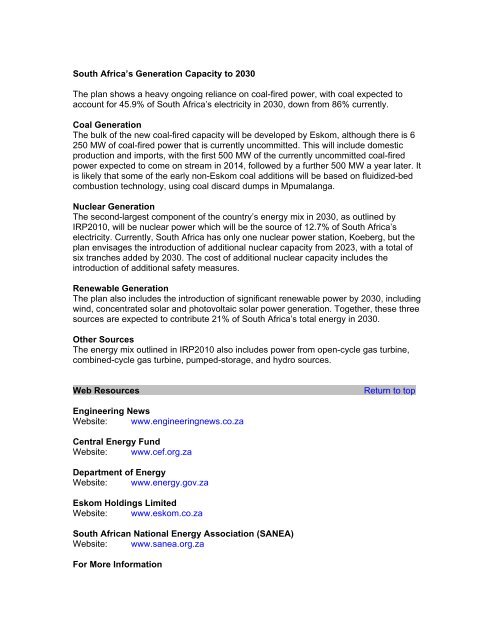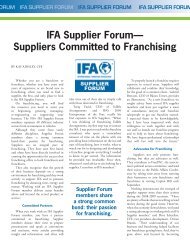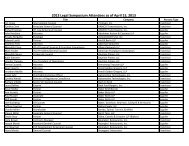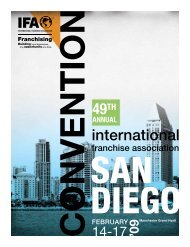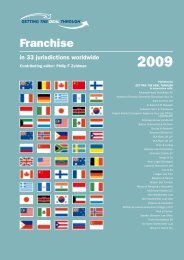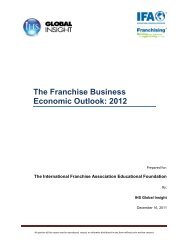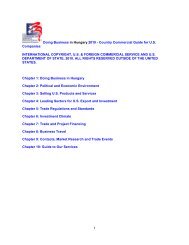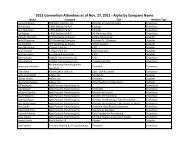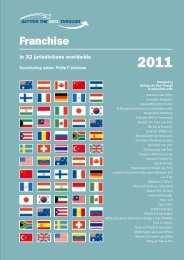South Africa - International Franchise Association
South Africa - International Franchise Association
South Africa - International Franchise Association
Create successful ePaper yourself
Turn your PDF publications into a flip-book with our unique Google optimized e-Paper software.
609 8 400 8 400 1 000 9 600 45 637<br />
<strong>South</strong> <strong>Africa</strong>’s Generation Capacity to 2030<br />
The plan shows a heavy ongoing reliance on coal-fired power, with coal expected to<br />
account for 45.9% of <strong>South</strong> <strong>Africa</strong>’s electricity in 2030, down from 86% currently.<br />
Coal Generation<br />
The bulk of the new coal-fired capacity will be developed by Eskom, although there is 6<br />
250 MW of coal-fired power that is currently uncommitted. This will include domestic<br />
production and imports, with the first 500 MW of the currently uncommitted coal-fired<br />
power expected to come on stream in 2014, followed by a further 500 MW a year later. It<br />
is likely that some of the early non-Eskom coal additions will be based on fluidized-bed<br />
combustion technology, using coal discard dumps in Mpumalanga.<br />
Nuclear Generation<br />
The second-largest component of the country’s energy mix in 2030, as outlined by<br />
IRP2010, will be nuclear power which will be the source of 12.7% of <strong>South</strong> <strong>Africa</strong>’s<br />
electricity. Currently, <strong>South</strong> <strong>Africa</strong> has only one nuclear power station, Koeberg, but the<br />
plan envisages the introduction of additional nuclear capacity from 2023, with a total of<br />
six tranches added by 2030. The cost of additional nuclear capacity includes the<br />
introduction of additional safety measures.<br />
Renewable Generation<br />
The plan also includes the introduction of significant renewable power by 2030, including<br />
wind, concentrated solar and photovoltaic solar power generation. Together, these three<br />
sources are expected to contribute 21% of <strong>South</strong> <strong>Africa</strong>’s total energy in 2030.<br />
Other Sources<br />
The energy mix outlined in IRP2010 also includes power from open-cycle gas turbine,<br />
combined-cycle gas turbine, pumped-storage, and hydro sources.<br />
Web Resources Return to top<br />
Engineering News<br />
Website: www.engineeringnews.co.za<br />
Central Energy Fund<br />
Website: www.cef.org.za<br />
Department of Energy<br />
Website: www.energy.gov.za<br />
Eskom Holdings Limited<br />
Website: www.eskom.co.za<br />
<strong>South</strong> <strong>Africa</strong>n National Energy <strong>Association</strong> (SANEA)<br />
Website: www.sanea.org.za<br />
For More Information


